Submitted by Berrin Chatzi Chousein
Renzo Piano transforms 1900s Moscow power station into art gallery
Russia Architecture News - Oct 20, 2015 - 11:04 12642 views
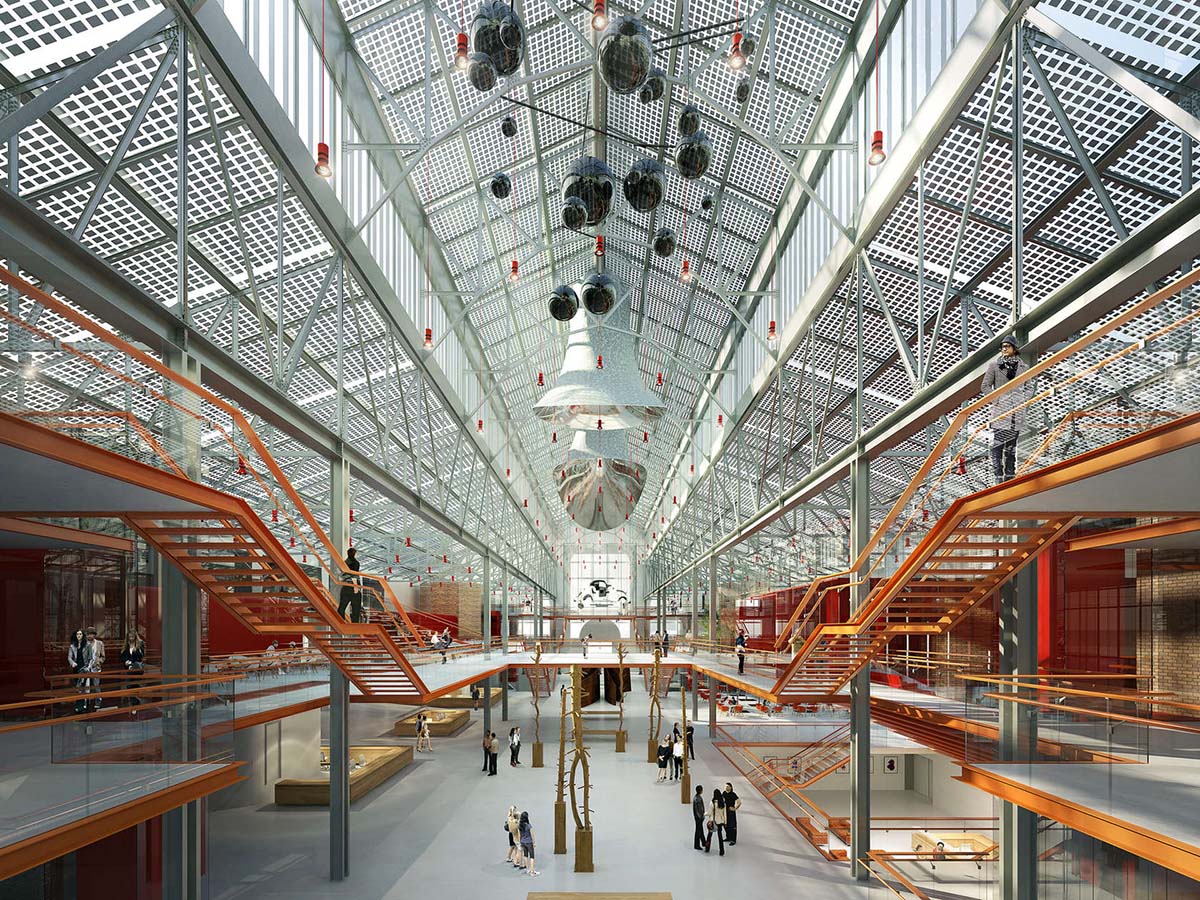
interior view of art gallery
all images courtesy of RPBW / V-A-C foundation
Italian architect Renzo Piano converts the historical 1900s Moscow power station into art gallery. Renzo Piano Building Workshop (RPBW) commissioned by the V-A-C Foundation to transform the building into a new contemporary museum. The historical building is located in the city’s Red October district, by the banks of the Moscova River. Renzo Piano's proposal includes 23m-high turbine hall settled into the main exhibition space and the new building extend 100m-long. The interior of the building is very flexible and forms a fragmanted appearance with steel-staircases, contrast colours, platforms and galleries. All the structure is read in the interior space, which is a very stylistic feature of Piano's design approach.
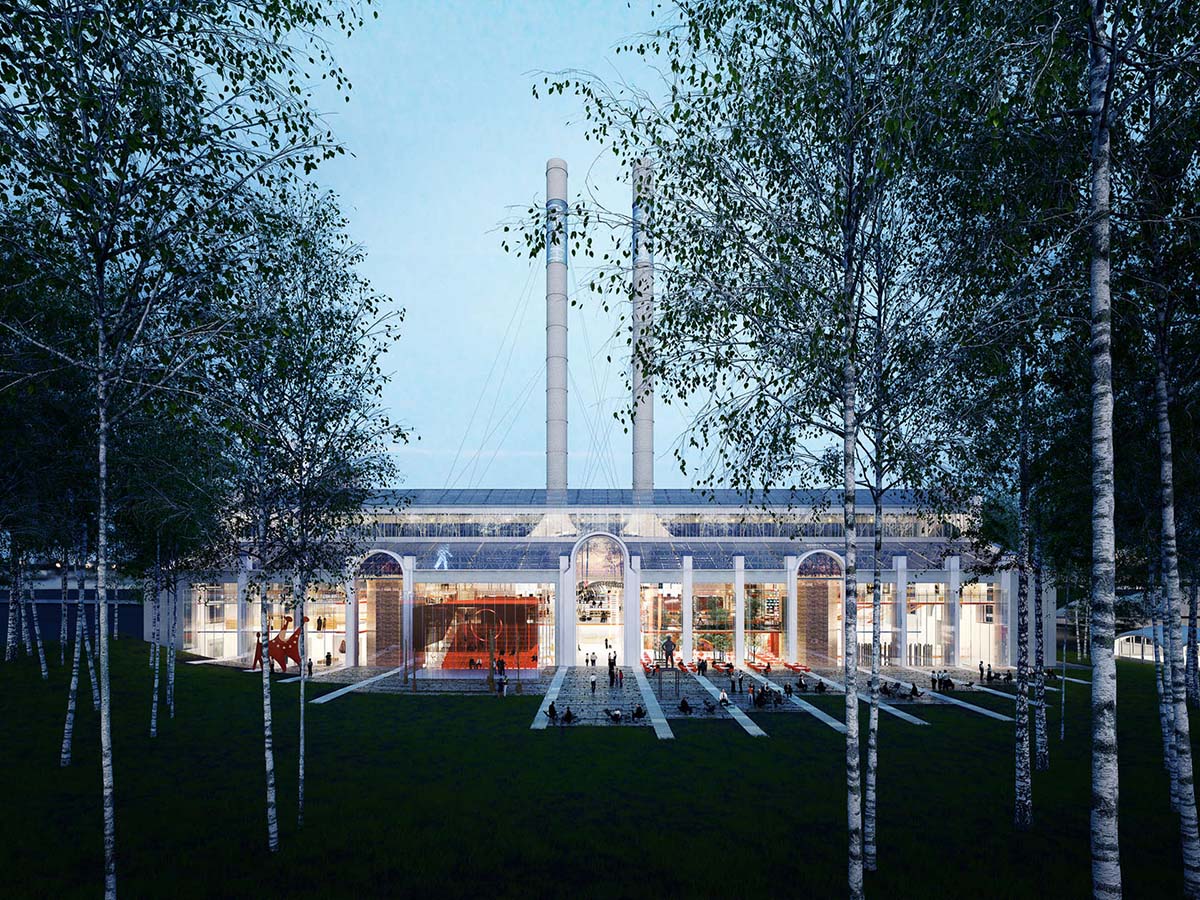
outer view of the new building
GES2 will become a striking cultural destination, offering new opportunities for artists and audiences on a local, national and international level and the first major venue in the city of Moscow for V-A-C. The ‘welcoming’ area of the new building will be made up of an outdoor sculpture park, including also a library, bookshop, cafe and auditorium inside. The museum’s educational area will house many resident artists and host the V-A-C Foundation’s courses, workshops, and curatorial summer school.
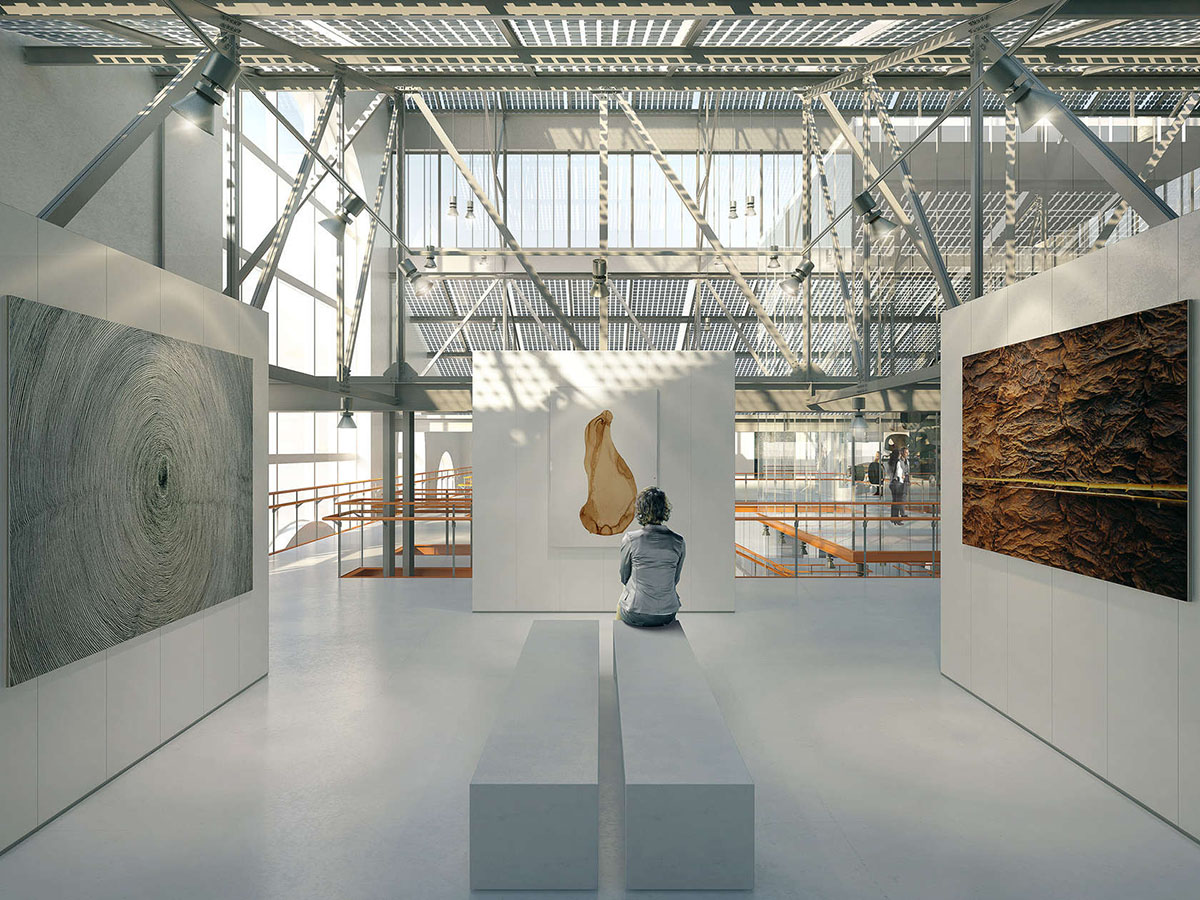
view from the exhibition
Piano's proposal plan includes an amphitheatre, which can put on events and open-air film screenings, which will be located outside the power station- especially, will house during summers, it will be the most attractive space when the garden is transformed into an open-air cinema.
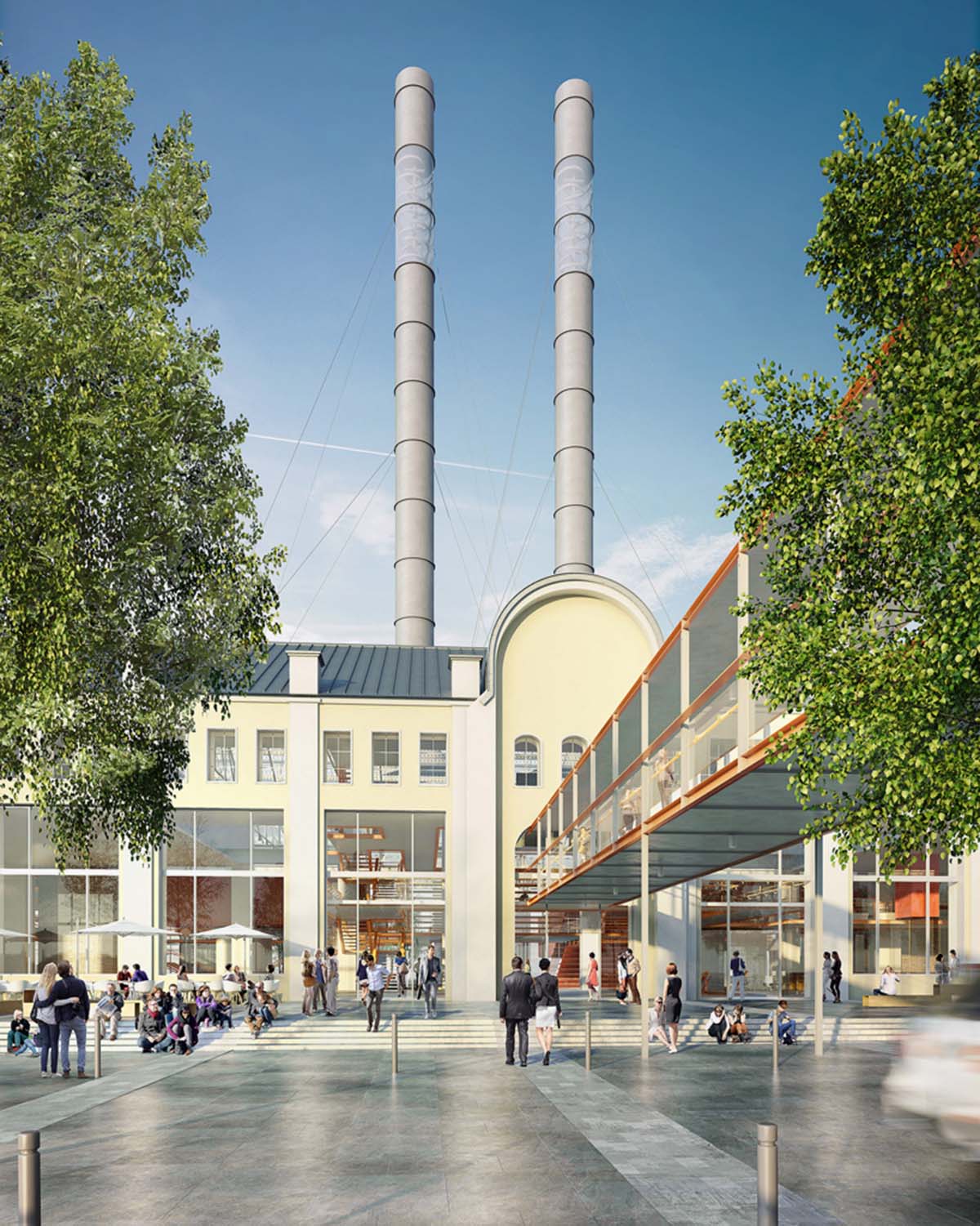
view from the entrance of the building
The other most important pieces of the plan are the existing chimneys, which are protected in the new transformation plan as the site’s natural ventilation and reduced energy consumption element. ''The project draws upon important sustainable features including and geothermal sources and the use of solar cells'' says Antonio Belvedere, partner-director at RPBW. The project is expected to be complete by early 2019. It will also be another cultural and contemporary addition to the Red October district, which is already home to the Strelka Institute and Udarnik Contemporary Art Center.
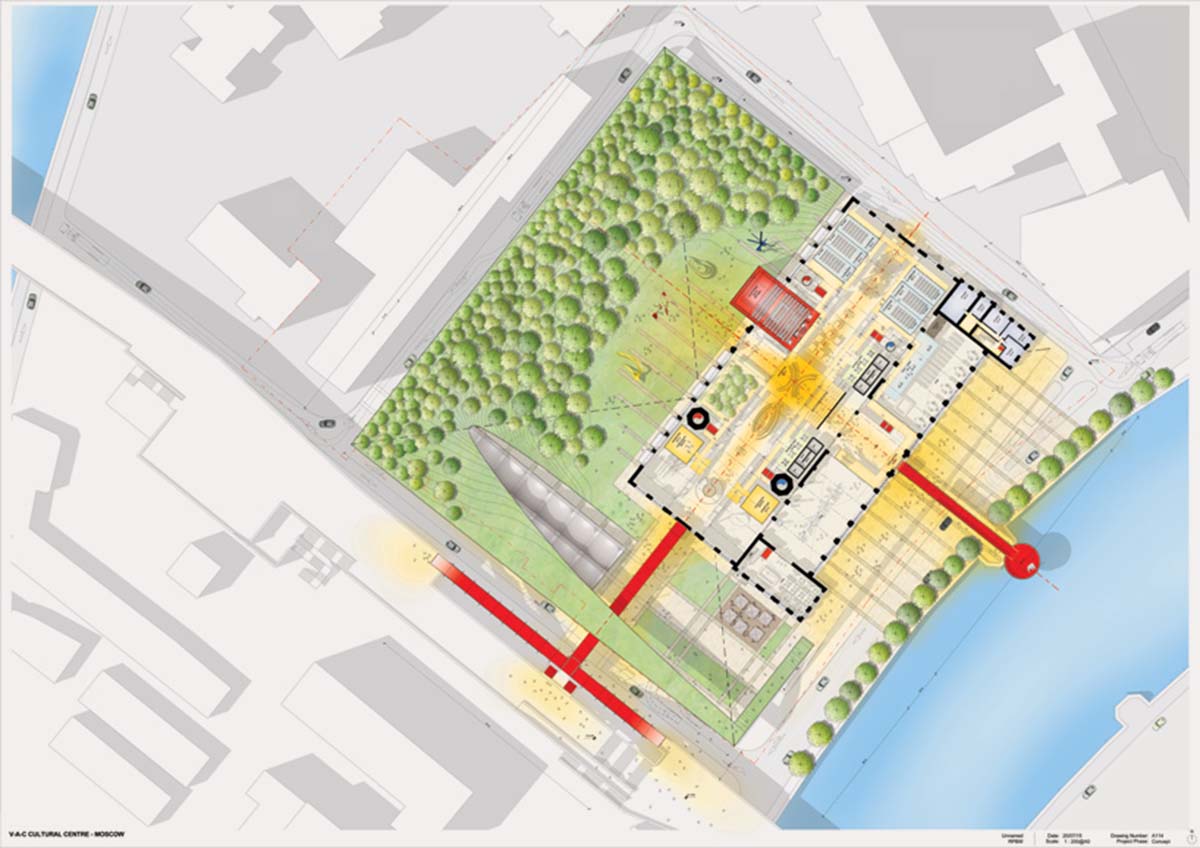
the entire site covers up many activities and green area, seems very vivid and dynamic
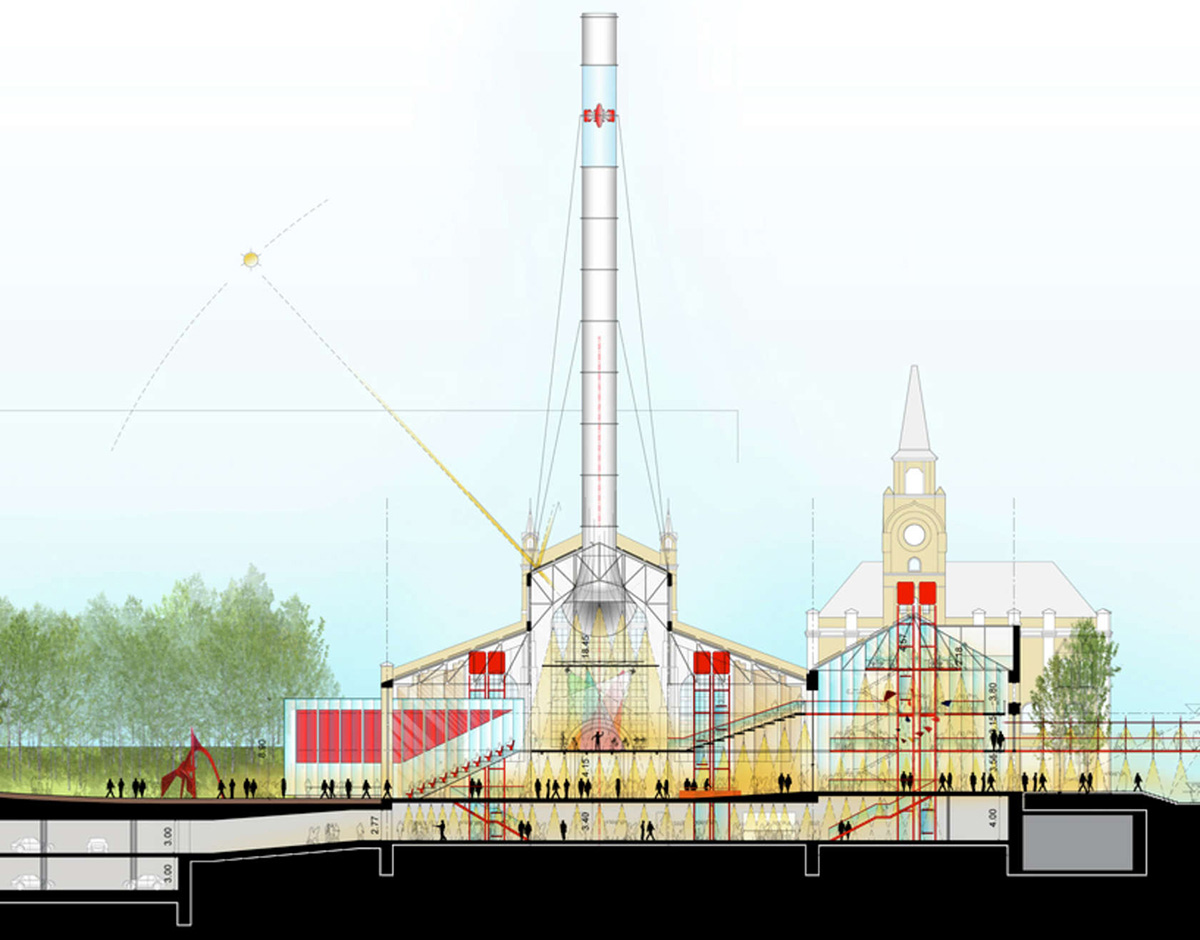
section-1
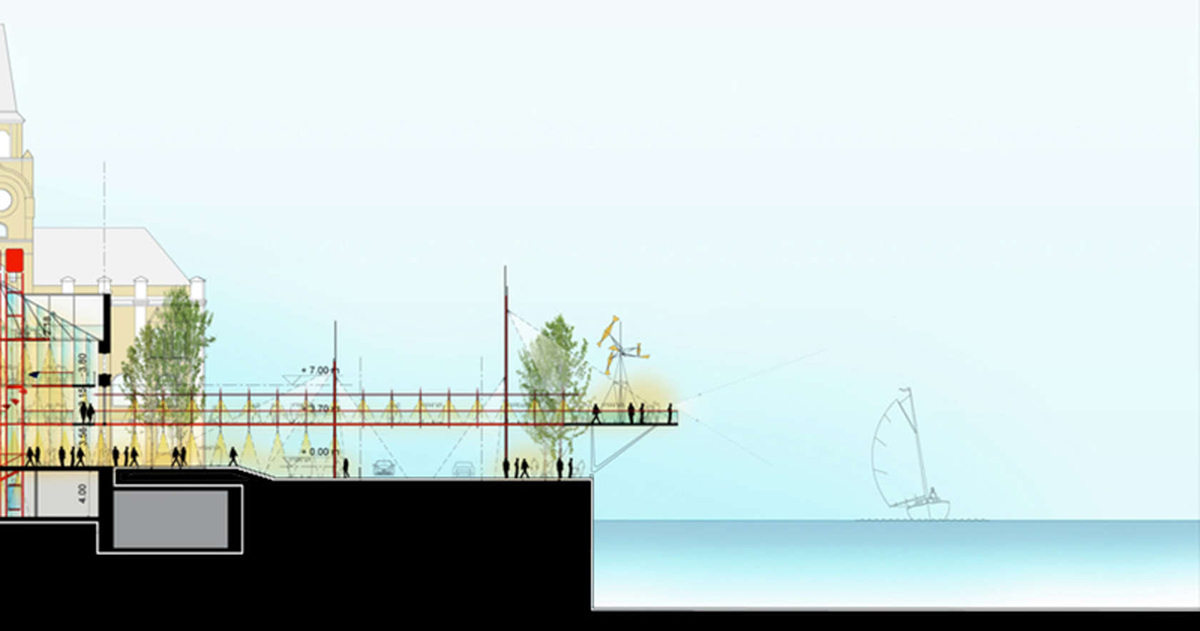
section-2
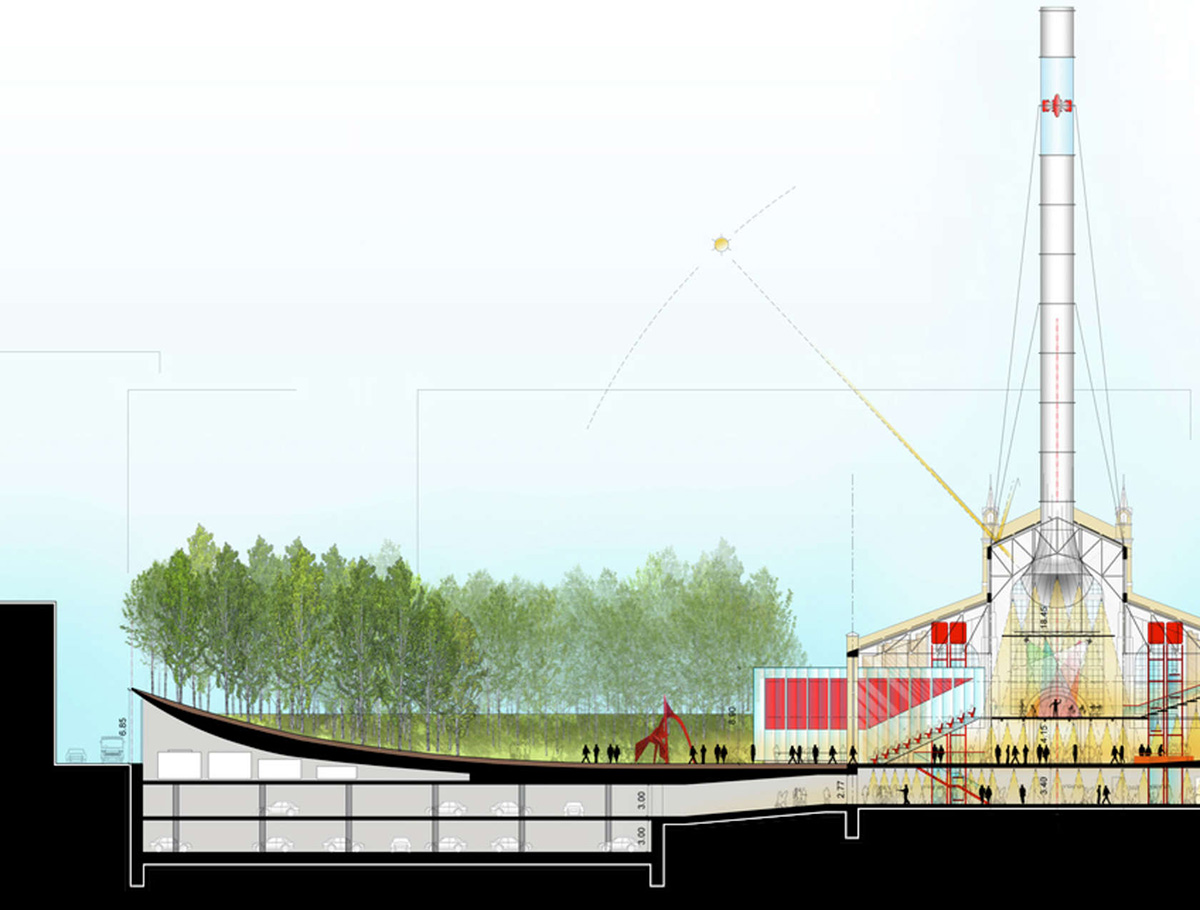
section-3
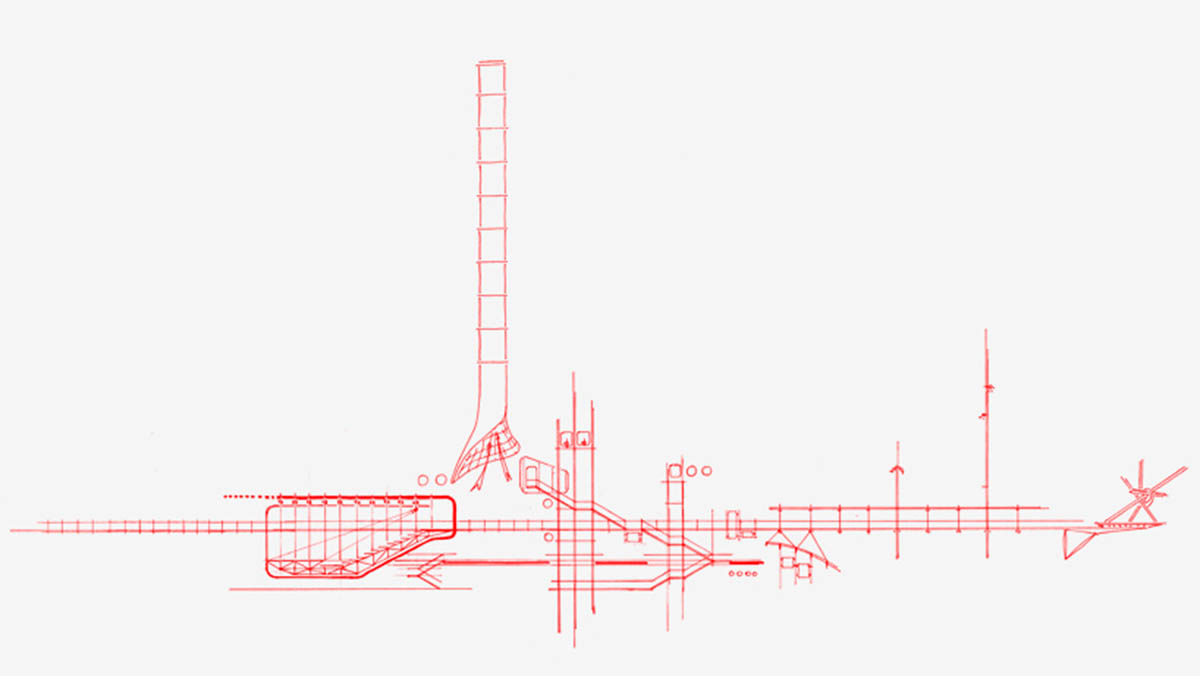
initial sketch of Renzo Piano
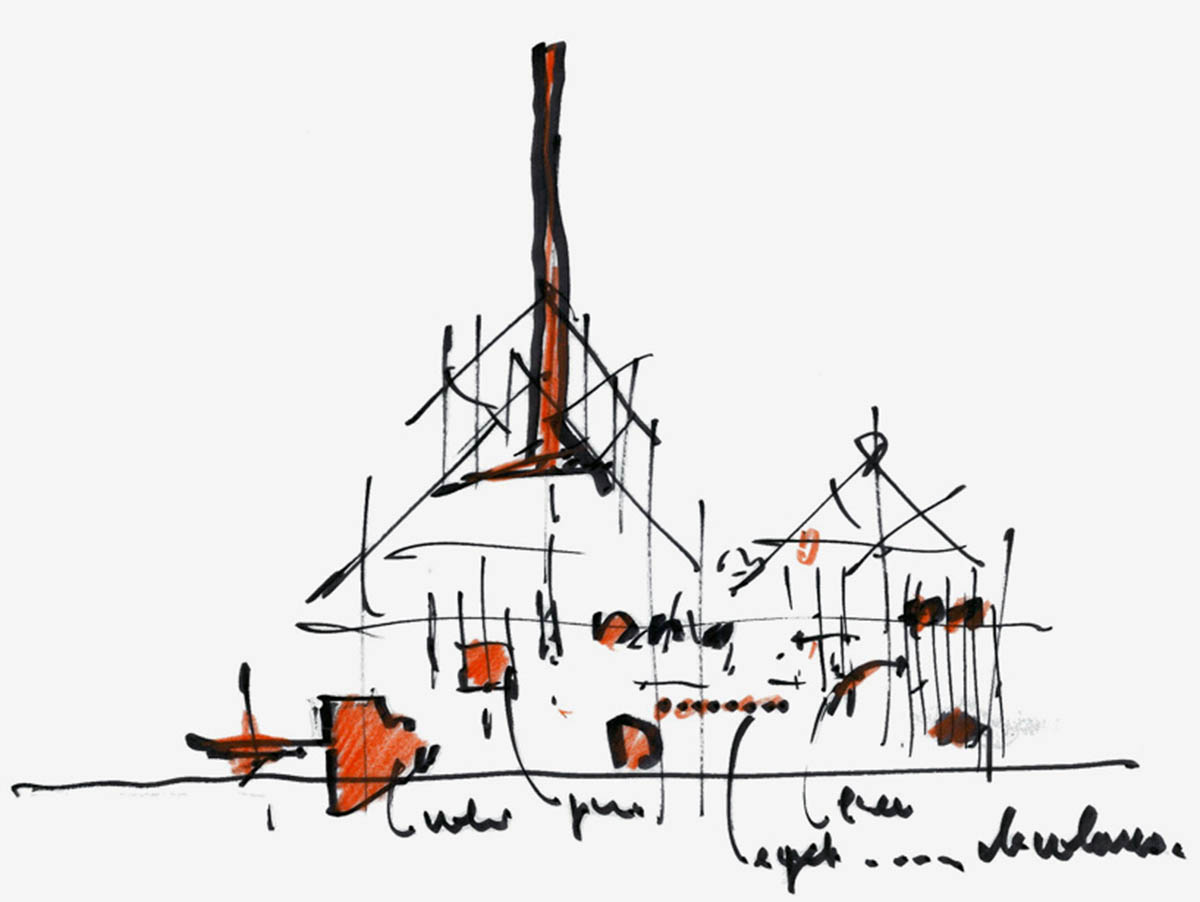
Piano's sketch shows the power plant and its central nave
> via rpbw.com, the V-A-C Foundation
